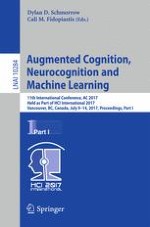
2017 | OriginalPaper | Chapter
My Brain Is Out of the Loop: A Neuroergonomic Approach of OOTL Phenomenon
Authors : Bruno Berberian, Jonas Gouraud, Bertille Somon, Aisha Sahai, Kevin Le Goff
Published in: Augmented Cognition. Neurocognition and Machine Learning
Publisher: Springer International Publishing
Activate our intelligent search to find suitable subject content or patents.
Select sections of text to find matching patents with Artificial Intelligence. powered by
Select sections of text to find additional relevant content using AI-assisted search. powered by